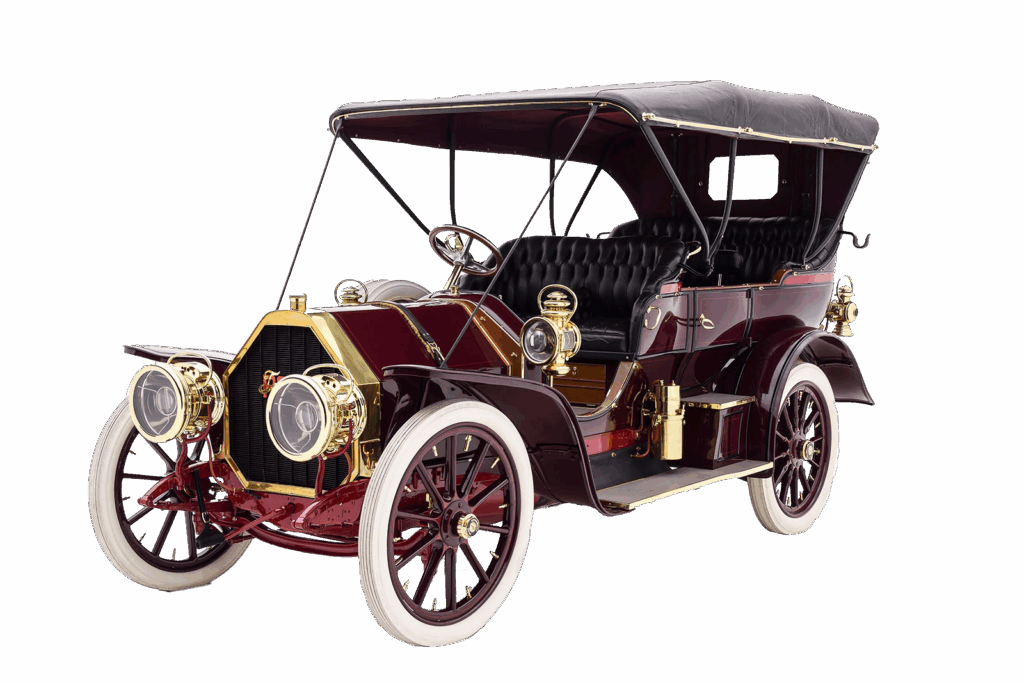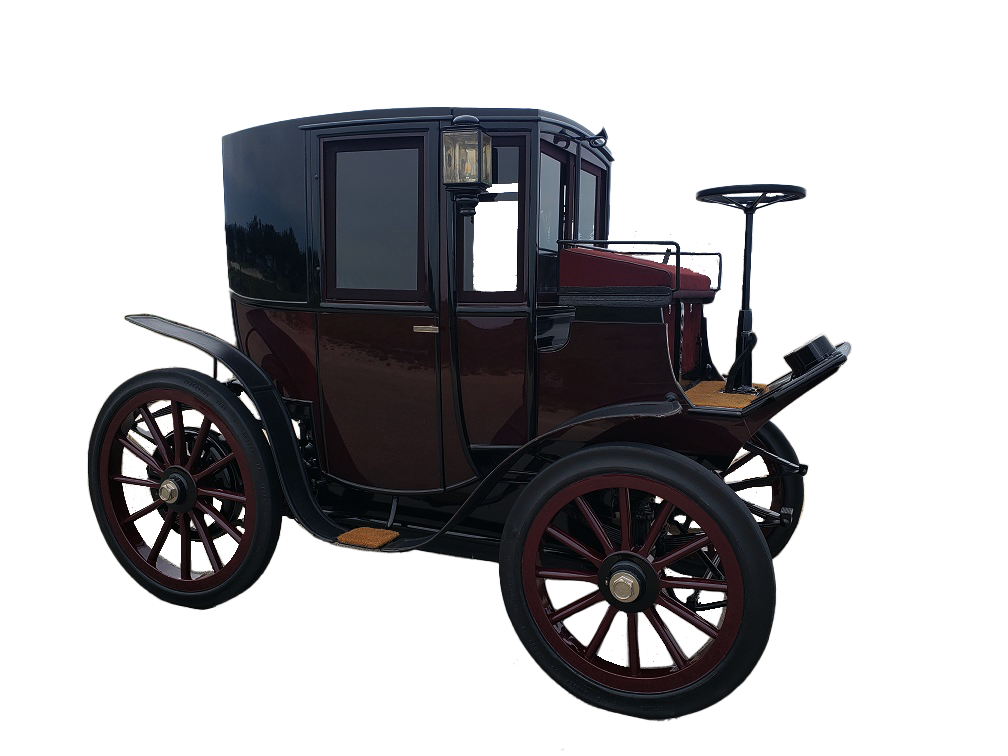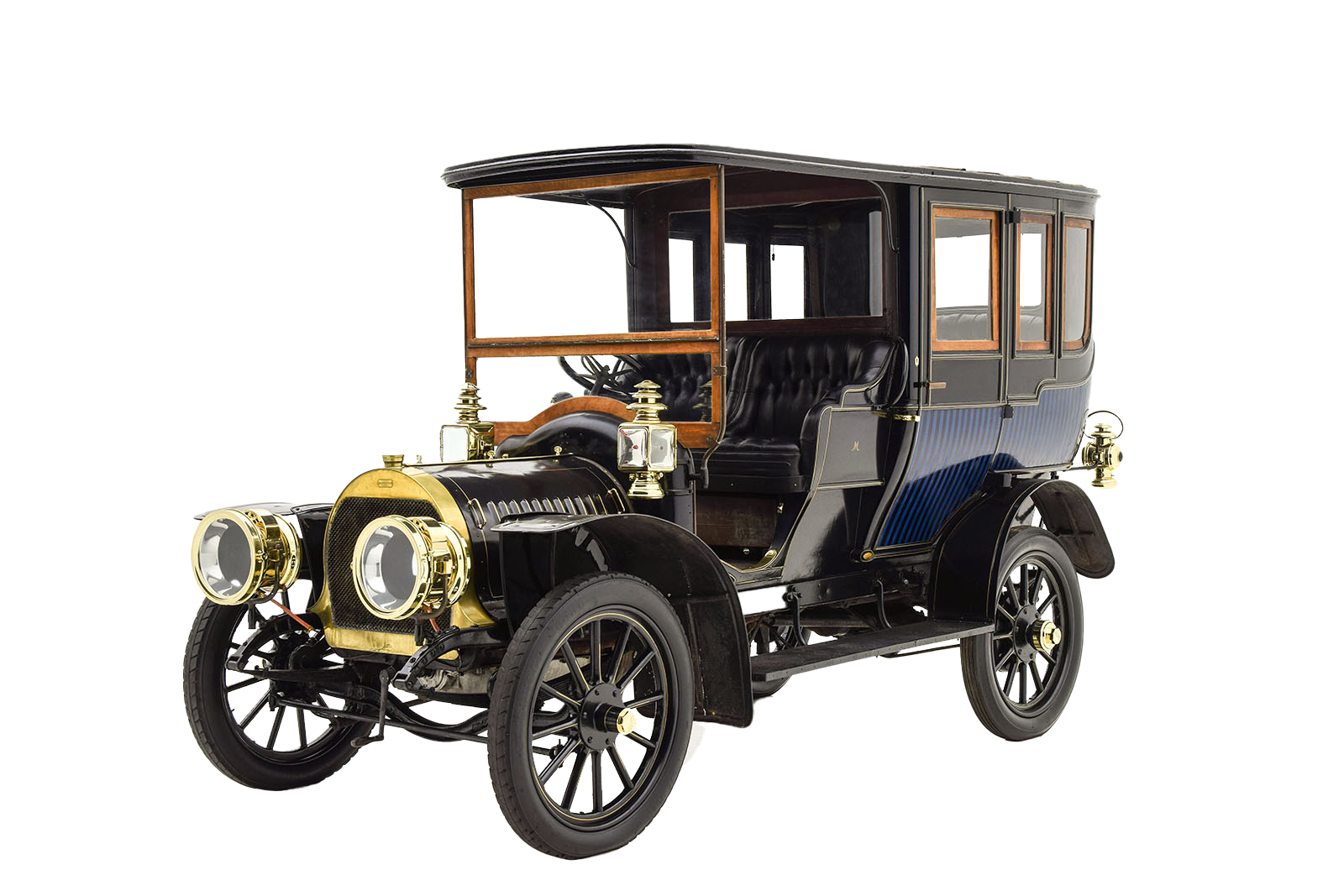The 1907 Pope-Toledo on display here is a Type XV Touring Car, one of only a handful that survive. Its deep maroon body with bright red highlights and black accents makes an immediate impression, while the curvaceous bodywork gives the car a flowing, elegant presence unusual for the era.
Everywhere you look, fine details reinforce its status as a luxury motorcar:
- Massive Solar De Luxe brass headlamps and matching cowl lamps fed by a polished acetylene tank.
- Wooden-spoke wheels with bold coach striping and white tires.
- A black leather interior with button-tufted upholstery, fine woodwork, and brass trim.
- Thoughtful touches like embossed patterns on the seat edges, storage cabinets under the seats, and a wicker trunk secured with leather straps.
Even the convertible top is distinctive, lined in red fabric and fitted with full weather equipment, including side curtains and a soft windscreen.
Beneath its stately exterior lies a massive T-head four-cylinder engine, originally rated at 50 horsepower. Polished copper plumbing, brass fittings, and meticulous detailing highlight the quality of its engineering. Power reaches the rear wheels through a chain-drive axle, a setup renowned at the time for its strength and reliability.
This combination of luxury and performance made the Pope-Toledo one of the most prestigious cars of the Brass Era, a motorcar built to impress on both the boulevard and the open road.
The 1907 Type XV you see here once belonged to the legendary William F. Harrah Collection, and its careful restoration ensures it still captures the opulence and ambition of America’s early luxury cars.
Company History
At the turn of the 20th century, Col. Albert Augustus Pope dreamed big, so big that no fewer than five automobile companies bore his name. From Hartford, Connecticut, Pope launched an automotive empire that spanned everything from modest runabouts to world-class luxury cars. Between 1904 and 1914, Pope-built automobiles represented nearly every approach to motoring: the electric Pope-Waverly, the economical Pope-Tribune, the short-lived Pope-Robinson, the reliable Pope-Hartford, and the crown jewel of them all, the Pope-Toledo.
The Pope-Toledo began life in 1904, emerging from Pope’s earlier bicycle business. The company briefly built steam cars before embracing gasoline, and it didn’t take long for the new machines to make a name for themselves. A Pope-Toledo finished 3rd in the 1904 Vanderbilt Cup, one of America’s most prestigious races, and in 1905 it won the nation’s first 24-hour endurance contest.
These successes helped establish Pope-Toledo as one of the most desirable luxury cars of its day. By 1907, the lineup included a 50-horsepower limousine that cost a staggering $6,000, placing it among the most expensive automobiles in America.
The Pope-Toledo represents the height of Col. Pope’s automotive vision. But the empire grew too fast and collapsed within a few short years. By 1909, Pope-Toledo was gone; by 1913, Pope-Hartford had followed. Today, only a handful of Pope automobiles remain, and the Toledo stands out as the rarest and most powerful.



